Tavs Jorgensen of the Centre for Print Research in England has created a method of extruding cob into brick shapes that can be stacked in interlocking patterns. The process involves pushing different samples of cob through 3D-printed extrusion molds known as dies.
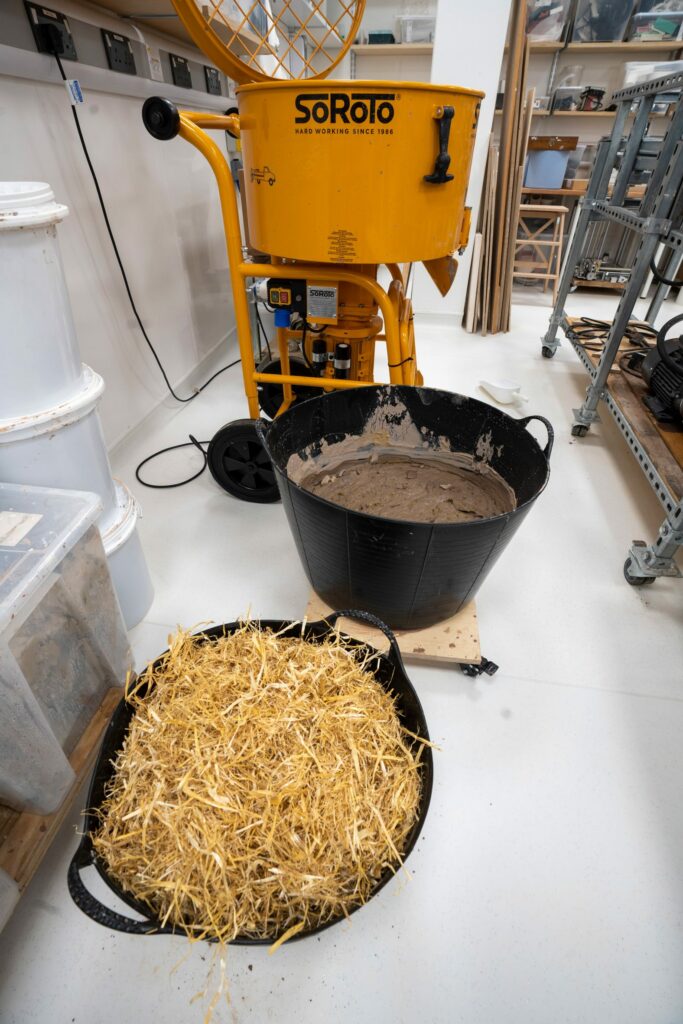 Cob is made by combining subsoil, water and fibrous materials such as straw. Tavs says, “We were particularly keen to work with cob as there is very limited knowledge of extruding this material and we were also driven by the opportunity to contribute with research to develop sustainable and low-carbon construction approaches, which are so badly needed.”
Cob is made by combining subsoil, water and fibrous materials such as straw. Tavs says, “We were particularly keen to work with cob as there is very limited knowledge of extruding this material and we were also driven by the opportunity to contribute with research to develop sustainable and low-carbon construction approaches, which are so badly needed.”
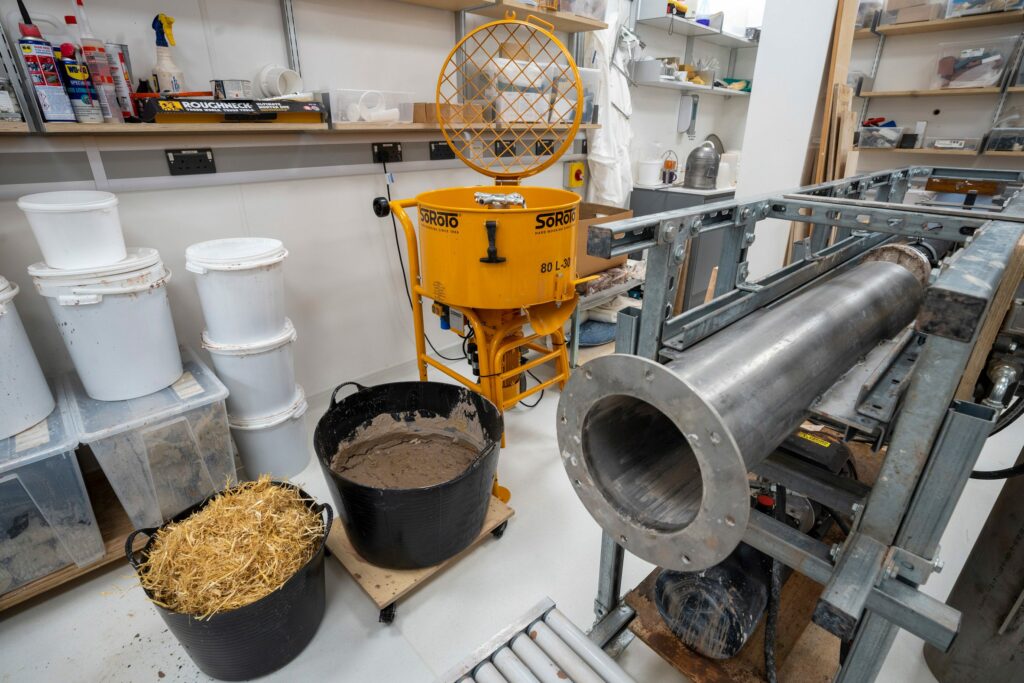 “The fibres bind the cob composite together, so firing is not necessary,” he continued. “Avoiding firing makes cob bricks an extremely low-carbon building material. Unfired cob bricks can also easily be returned to the raw state of the components – basically just earth and composable fibers – so complete material circularity can be achieved with no waste at all.”
“The fibres bind the cob composite together, so firing is not necessary,” he continued. “Avoiding firing makes cob bricks an extremely low-carbon building material. Unfired cob bricks can also easily be returned to the raw state of the components – basically just earth and composable fibers – so complete material circularity can be achieved with no waste at all.”
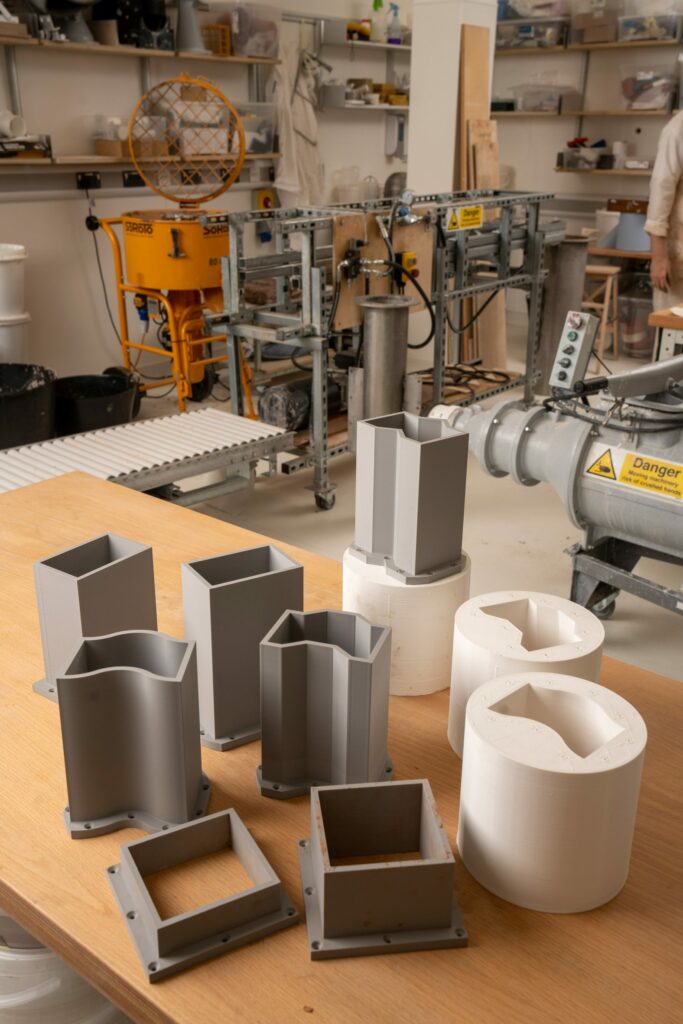 Cob is traditionally formed into monolithic walls and compressed, but Jorgensen hopes that making the biomaterial available in brick form will make it more accessible. “The extrusion process is one of the most efficient industrial methods for producing bricks and other architectural construction components, so making cob bricks in this way presents significant averages in terms of speed and low cost,” he explained.
Cob is traditionally formed into monolithic walls and compressed, but Jorgensen hopes that making the biomaterial available in brick form will make it more accessible. “The extrusion process is one of the most efficient industrial methods for producing bricks and other architectural construction components, so making cob bricks in this way presents significant averages in terms of speed and low cost,” he explained.
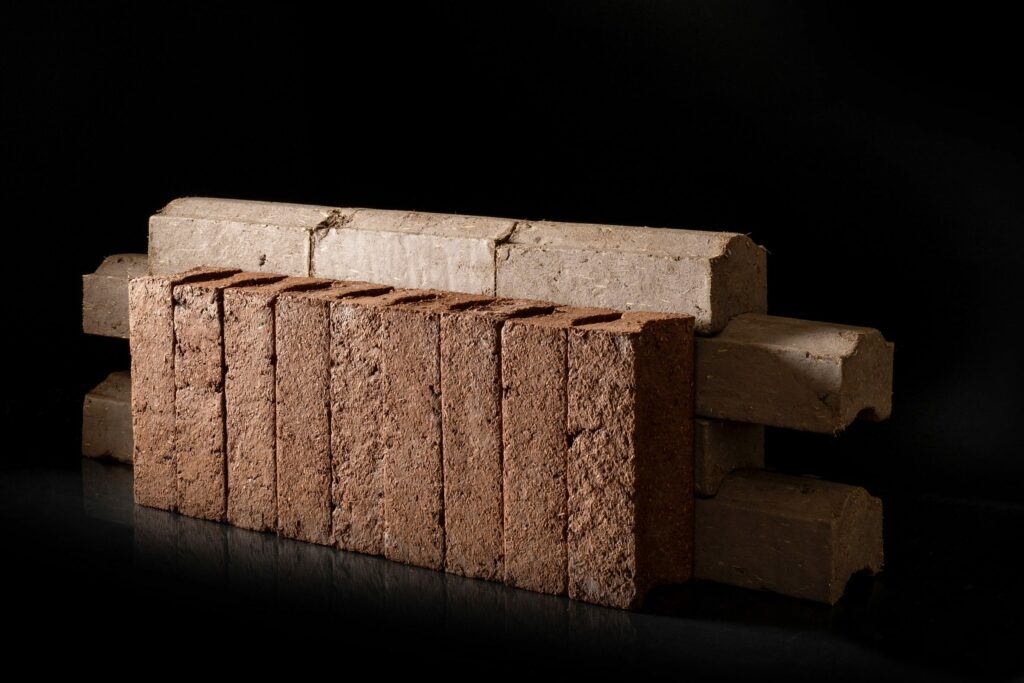 Multiple cob mixtures were made to test what worked best for the extrusion process and Jorgensen has developed both light and heavy versions of the bricks.
Multiple cob mixtures were made to test what worked best for the extrusion process and Jorgensen has developed both light and heavy versions of the bricks.
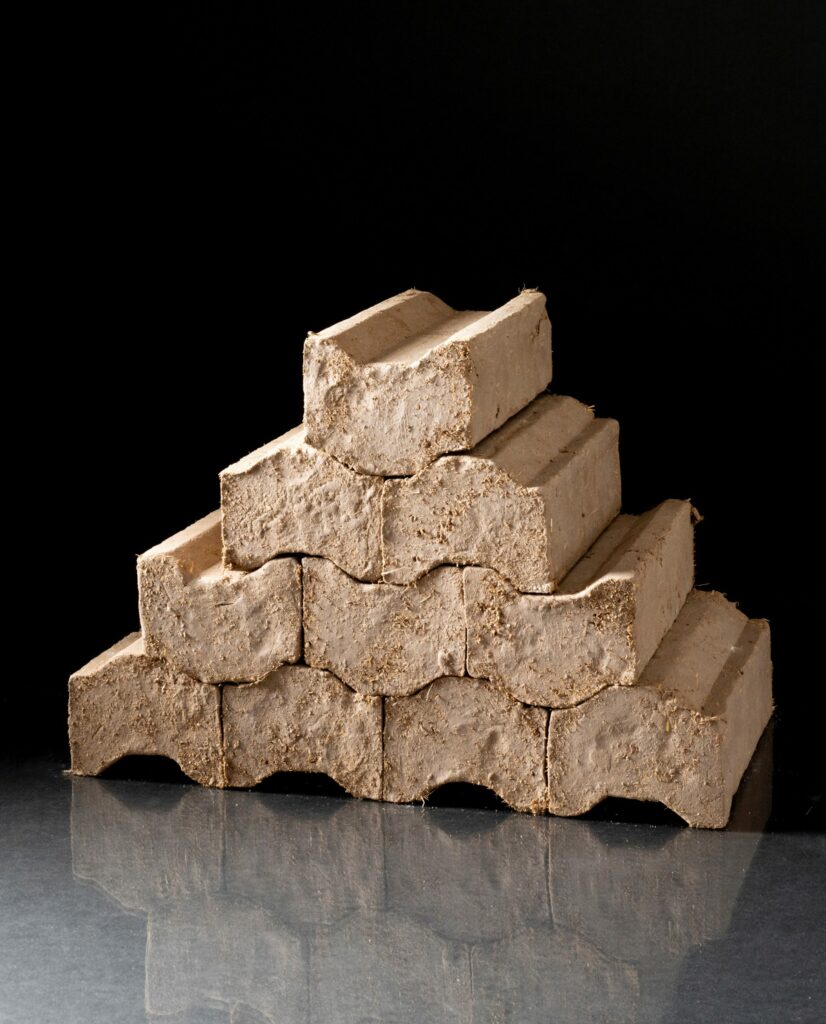 The light cob bricks are made with two parts liquid clay and three parts hemp shiv – the woody core of the hemp plant. Meanwhile, heavier bricks are made from one part sand to one part clay, which is then added to a mixture of barley straw and water. “There are lots of other variations with different fibers, clay and fillers that could be explored,” explained Jorgensen. “The key challenge in using the extrusion process is that cob or earth composites need to have sufficient plasticity to be formed in this way.”
The light cob bricks are made with two parts liquid clay and three parts hemp shiv – the woody core of the hemp plant. Meanwhile, heavier bricks are made from one part sand to one part clay, which is then added to a mixture of barley straw and water. “There are lots of other variations with different fibers, clay and fillers that could be explored,” explained Jorgensen. “The key challenge in using the extrusion process is that cob or earth composites need to have sufficient plasticity to be formed in this way.”
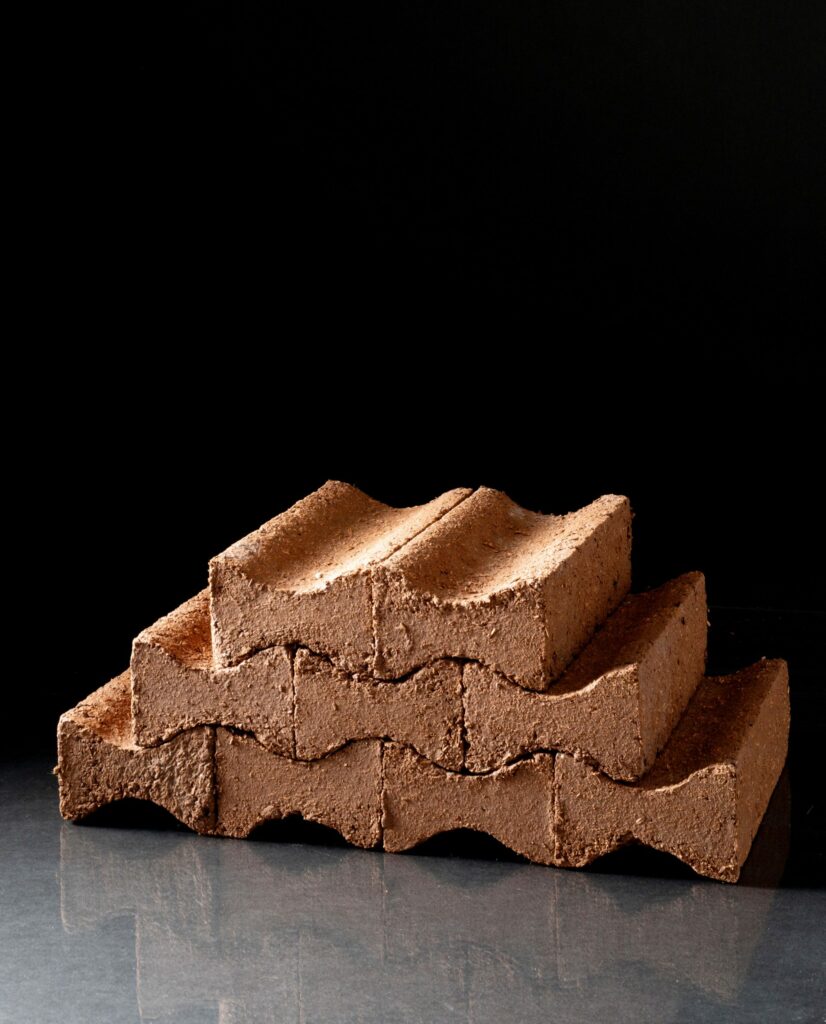 The dies are made with interlocking shapes, designed to negate the need for mortar in construction. The extrusion process also allows the possibility of more complex geometries, including bricks with air cavities. Using 3D-printed extrusion dies allows for rapid and low-cost exploration of such ideas.
The dies are made with interlocking shapes, designed to negate the need for mortar in construction. The extrusion process also allows the possibility of more complex geometries, including bricks with air cavities. Using 3D-printed extrusion dies allows for rapid and low-cost exploration of such ideas.
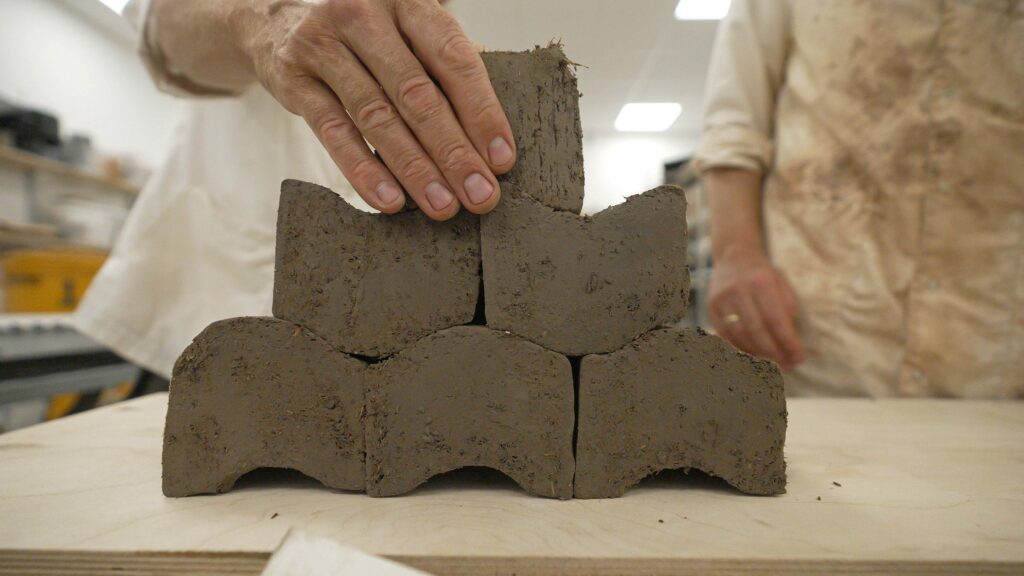 “The construction sector is still extremely unsustainable in terms of carbon footprint, toxic material usage and component circularity,” he said. “Building with raw earth has one of the lowest environmental impacts of any construction approach and it would be an obvious way to address the extremely serious environmental challenges that are presented to us.”
“The construction sector is still extremely unsustainable in terms of carbon footprint, toxic material usage and component circularity,” he said. “Building with raw earth has one of the lowest environmental impacts of any construction approach and it would be an obvious way to address the extremely serious environmental challenges that are presented to us.”
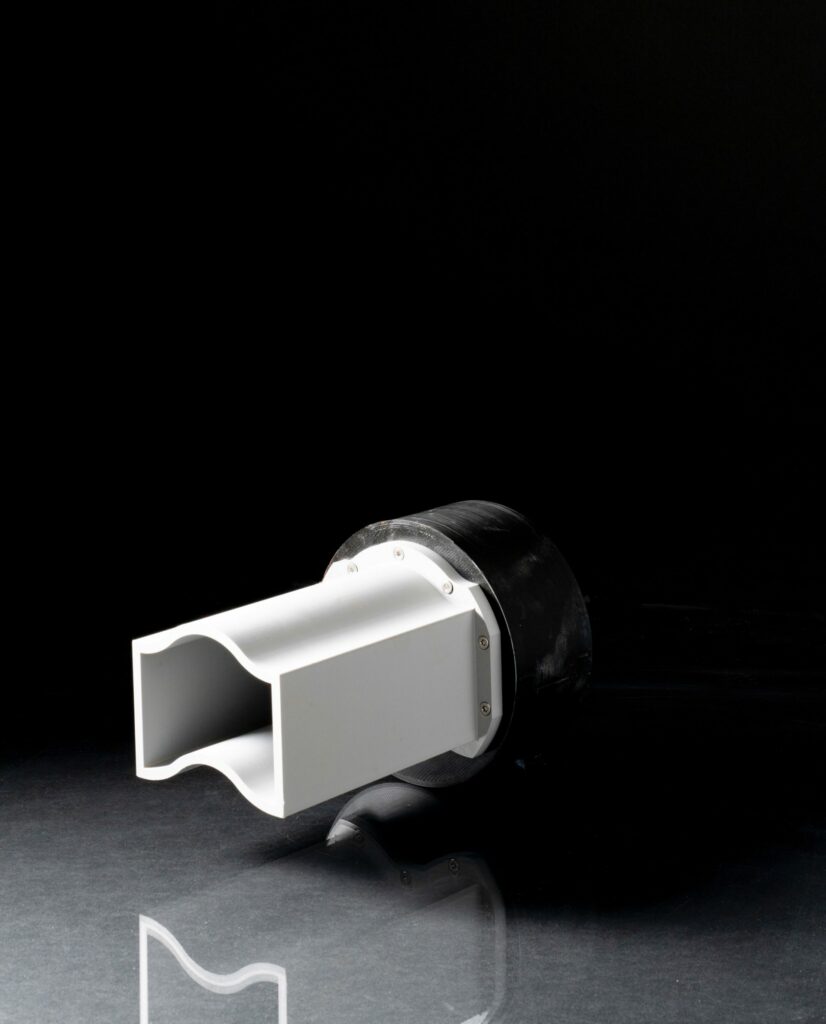 You can read the original article at www.dezeen.com
You can read the original article at www.dezeen.com

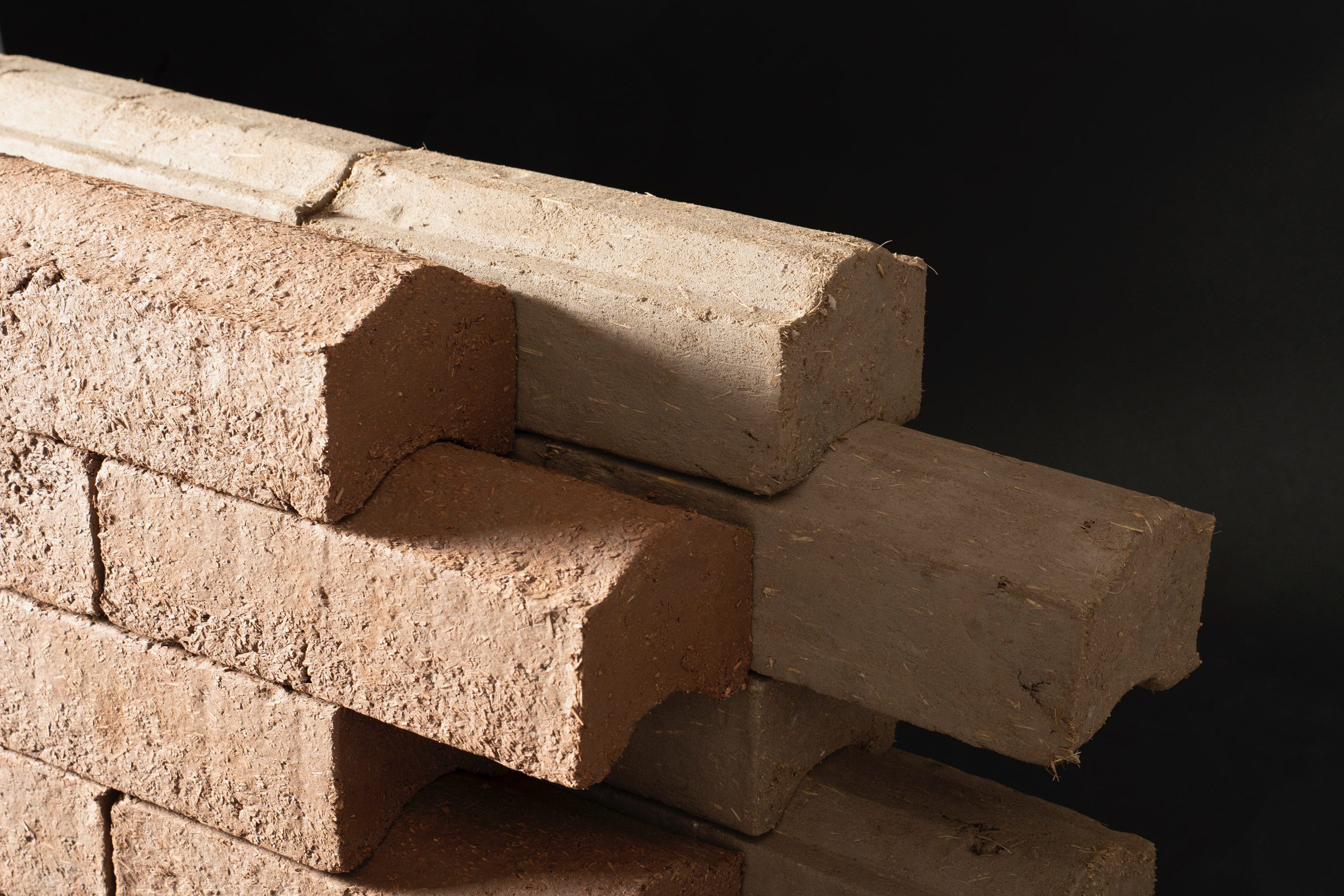
WOW! this is awesome technology for community building.
Kelly, thank you for continuing the legacy of sharing all this wisdom from around the world with folks. many bright blessings to all.